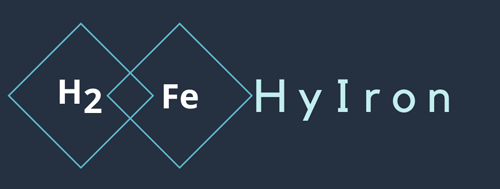World’s largest hydrogen direct reduction plant for the production of green iron to be opened in Lingen by Lower Saxony’s Environment and Energy Minister Meyer
Decarbonization of the iron steel industry is one of the biggest challenges in the fight against climate change. In Germany alone, around 55 million tons of CO2 are emitted annually in steel production. This corresponds to six percent of Germany’s total emissions.
HyIron, with the support of the state of Lower Saxony, has now succeeded in taking a giant step toward meeting this challenge. With the commissioning of the world’s largest direct reduction plant for green iron on the site of RWE’s Emsland gas-fired power plant, iron ore can be reduced solely with the aid of green hydrogen, and thus in a completely climate-neutral way. The Lower Saxony Ministry of Environment is funding the construction of the plant with three million euros.
In addition to HyIron the following associated partners are involved in the project: RWE and BENTELER Steel/Tube. With this project the partners are also testing the use of sponge iron in steel production from 2024. This will then be melted down with steel scrap and further processed into steel. BENTELER Steel/Tube wants to use the steel produced in Lingen to make low-CO2 tubes. The first step in the research project is to produce over one ton of green iron/hour using green hydrogen. “A lighthouse project with the world’s largest hydrogen direct reduction plant for the production of green iron is now getting underway at the Lingen site,” the partners said in a joint statement.
“The start-up of the pilot production at the Lingen site is a major milestone for us in bringing the “green iron” product to market maturity and establishing German technology worldwide,” said Dr. Stephan Köhne, managing partner of HyIron. “In Namibia, we are currently setting up an industrial-scale production with the support of the German Federal Ministry of Economics and Climate Protection (BMWK). In the long term, we will be able to produce up to two million tons of iron for the German steel industry, there. Here in Lingen, we are already using iron ore from Namibia to optimize the process and the product,” adds Köhne.
This innovative process is made possible by the development of a proprietary gas-tight rotary kiln. Here the hydrogen reacts completely with the oxygen in the iron ore and converts it into elemental iron (direct reduced iron (DRI)). Instead of carbon dioxide, this technology produces only water vapor, which can be reused for hydrogen production. This cycle represents another decisive advantage on the way to sustainable iron production.
Climate Protection Minister Christian Meyer: “The commissioning of this direct reduction plant is an important step on the way to a climate-neutral economy. The use of green hydrogen in steel production shows that technological innovations can make a decisive contribution to protecting our environment. The successful implementation of this project also underlines Lower Saxony’s attractiveness as a location for the future technology of hydrogen and underpins Lower Saxony’s path to becoming Germany’s No.1 green hydrogen state.”
District Administrator Marc-André Burgdorf: “The direct reduction plant for green iron once again demonstrates the potential for innovation in Emsland. With the excellent conditions of active companies, a strong network, support from regional politics as well as suitable infrastructure, we are an important location for the hydrogen economy.”
Mayor Dieter Krone: “Lingen is already one of the most important energy locations and pioneers for green hydrogen in Germany.
With the new hydrogen direct reduction plant for the production of green iron, we in Lingen are setting global standards for climate-neutral steel production – a milestone for the decarbonization of this important industry.”
HyIron’s technology makes it possible to exploit the global potential for climate-neutral iron production. Mechanisms such as climate protection agreements also allow the production of these important raw materials to be established sustainably in Germany. The location decision for Lingen was made due to the high density of hydrogen projects in the Emsland H2 region in general and specifically at RWE’s Emsland gas-fired power plant site.In the future, the green hydrogen for HyIron will be produced in RWE’s 14-megawatt pilot electrolysis plant, which is expected to start operating directly next to the direct reduction plant at the end of 2023.The Lower Saxony Ministry for the Environment, Energy and Climate Protection is funding the construction of the pilot electrolysis plant with eight million euros.
Note I:
Fotos of the opening can be downloaded from this link. For the Copyright please note „HyIron/Georg Schreiber“!
Note II: HyIron is a group of companies of the TS Group from Aachen and LSF Energy from Paderborn. The TS Group is a pioneer in technical solutions in the field of fuel cells, batteries, and industrial furnaces while LSF Energy has many years of experience in the generation of renewable energies. Together they launched CO2GRAB a few years ago with the aim of developing and marketing efficient technologies to avoid CO2 emissions.
BENTELER Steel/Tube develops and produces steel as well as seamless and welded quality steel tubes. As one of the leading manufacturers, BENTELER Steel/Tube offers customers worldwide solutions along the entire value chain – from material development to tube application. This creates tailored products made of tubes for the automotive, energy and industrial markets.

